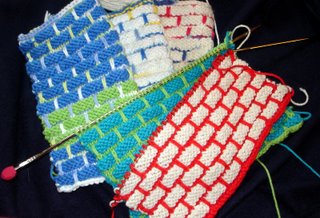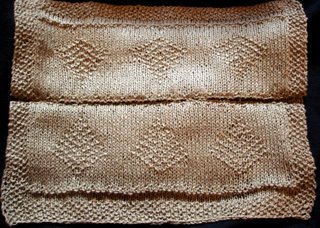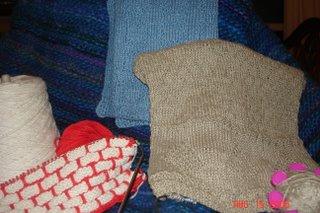I learned something with all my Mason-Dixoning. I like the patterns you can make with knitting. Knitting, for me, is completely non-intuitive. So I'm fascinated by how the texture of the fabric changes with such simple variations. I love that I can create shapes and textures based on how I manipulate the yarn. I realize this means cables are probably somewhere in my future, but not yet.
No. Flushed with the success of my tree of life hand towel, and wanting to practice the skills I learned at Stitches Midwest, I cast around for Something. Something new. Something pretty. Something patterned. And I found this at Knitty. Go ahead. Take a look.
I really want to make this. The description of the project sounds encouraging. There's even a knit-along I could join for support. But.... It's lace, isn't it? The sort of thing that leads to hours of winding thousands of yards of nearly invisible yarn that ends up in a ball approximately the size of a half-dollar.
So, no. I'm not making it. But I want to.
I confessed my dilemma/desire to my neighbor. (An observation here: My life is filling up with people I thought I knew who have secret knitter lives.) She tells me she has the perfect pattern. A feather and fan scarf. Only 3 repeats. Only 31 stitches wide. But with yarn-overs, slipped stitches, knit 2 togethers and pass slipped stitch overs. All the basic techniques I'd need for "Branching Out." I could think of it as a learning experience. Or a really big swatch, well, two actually. Except I'm hating them. Here's one of the reasons:
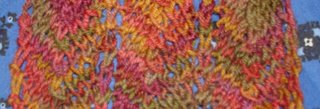 See that? The edges don't match. It's making me crazy.
See that? The edges don't match. It's making me crazy.
Here's another reason:

This is what happens when you can't count to 31. Or when you think you found where you lost/added a stitch, but you're wrong.
The last time I frogged the red scarf, I decided to knit the first and last stitches in the purl row. We'll see how this goes. The edges look sloppier to me, but at least they match. Maybe blocking will fix it?

Of course, if it does, I'll have to frog the other scarf. It looks like it'll be a while before I branch out.
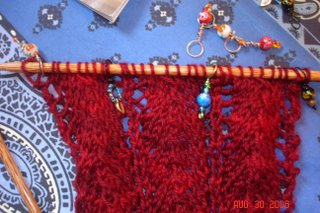 There's a marker every ten stitches and 2 yo's and 1 [k2tog, psso] between each marker. We shall see...
There's a marker every ten stitches and 2 yo's and 1 [k2tog, psso] between each marker. We shall see...





